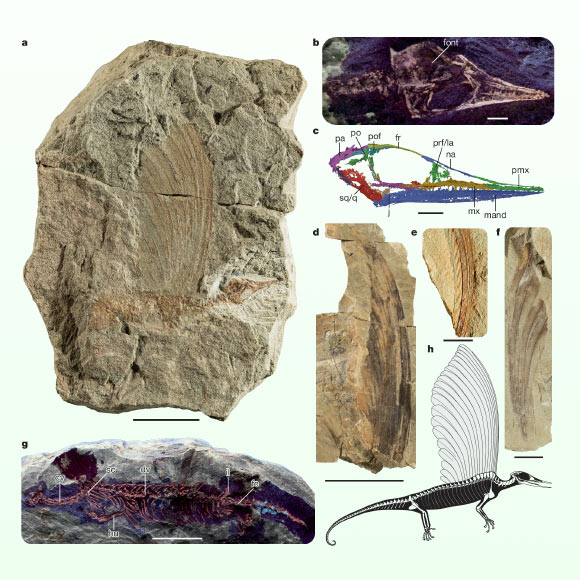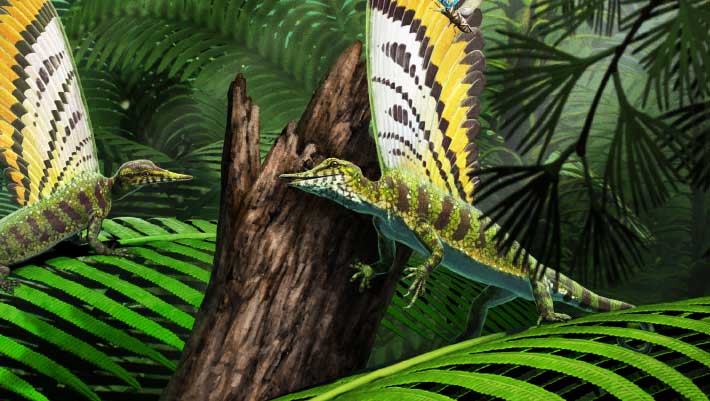Paleontologists have described a new genus and species of Triassic drepanosauromorph diapsid with striking integumentary appendages — which are neither feathers nor skin — based on two well-preserved skeletons and associated specimens. Their findings demonstrate that feathers or hair-like protrusions are not unique to birds and mammals.
Mirasaura grauvogeli in its natural forested environment, hunting insects. Image credit Gabriel Ugueto.
Feathers and hair are examples of complex appendages on the outer bodies of vertebrate animals and have important functions such as forming insulation, aiding sensation, providing displays and contributing to flight.
Feathers and hair have their origins in stem lineages of birds and mammals, respectively.
However, the genetic toolkit for the development of these appendages is likely to have deeper roots among amniotes — the branch of animals that encompasses reptiles, birds and mammals.
A Triassic reptile species described by Dr. Stephan Spiekman from the Staatliches Museum für Naturkunde Stuttgart and his colleagues had a distinctive crest of appendages up to 15.3 cm (6 inches) long along its back.
Named Mirasaura grauvogeli, this strange creature lived in what is now Europe some 247 million years ago.
Although the species had a superficially bird-like skull, it belonged to a group of diapsids called Drepanosauromorpha.

The anatomy of Mirasaura grauvogeli. Image credit: Spiekman et al., doi: 10.1038/s41586-025-09167-9.
Two well-preserved skeletons and 80 specimens with isolated appendages and preserved soft tissues of Mirasaura grauvogeli were found in northeastern France in the 1930s but remained unidentified until further preparation was undertaken in recent years.
“This allowed the crests and skeletal remains to be associated to each other,” the paleontologists explained.
“The tissues preserved within the appendages contain melanosomes (pigment-producing cells found in skin, hair and feathers) that are more similar to those seen in feathers than in reptilian skin or mammalian hair, although they lack the typical branching patterns seen in feathers.”
“These findings suggest that such complex appendages already evolved among reptiles before the origin of birds and their closest relatives, which may offer new insights into the origin of feathers and hair.”
“Considering the function of the appendages seen in Mirasaura grauvogeli, we ruled out roles in flight or camouflage and instead suggest a possible role in visual communication (signaling or predator deterrence).”
The team’s paper was published today in the journal Nature.
_____
S.N.F. Spiekman et al. Triassic diapsid shows early diversification of skin appendages in reptiles. Nature, published online July 23, 2025; doi: 10.1038/s41586-025-09167-9
